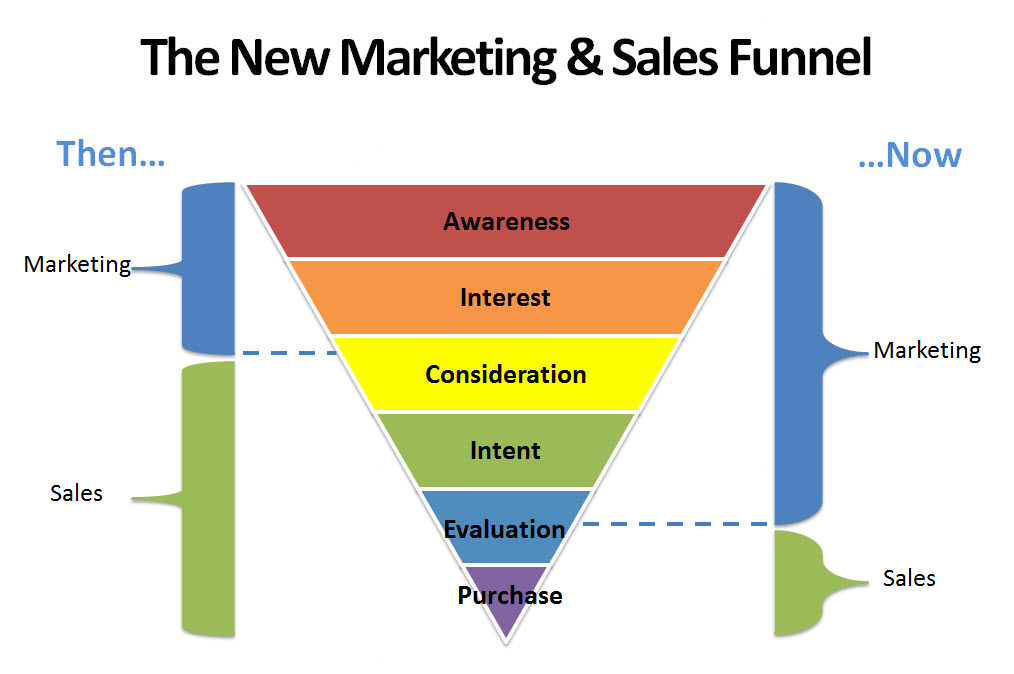Recently, I was in a meeting with Kent Billingsely of The Revenue Growth Company (a pretty impressive guy) discussing emerging trends and strategies in digital marketing. During our discussion, it came up that I was pushing a little into the sales funnel with some of my event marketing practices. While I couldn’t tell if he was impressed or astonished, I knew he knew the importance of what I was getting at. Directly following the examples we discussed, he suggested I should blog about it.
He’s right: this is a topic that really does need to be addressed. Often I work with companies that simply don’t get that marketing and sales work together. They think that sales and marketing are as separate as accounting and operations. And, for some reason they are kept separate. They often operate in different quarters of an office building and rarely do they share meetings. Even more is the mystery when the same company has a VP of Sales and Marketing, but still they don’t work together even when sharing the same direct report. Really they are solely functioning and the VP of Sales while the Director/Manager of Marketing reports directly to the CEO.
Where does the one end and the other start?
What is Integration?
I like to cook. I’m no chef my means, but I do like to cook…often. The other night I made fried chicken. I’ll tell ya, I love a good fried chicken. To make fried chicken you need a couple key ingredients (spices are auxiliary for now): you need chicken, an adhesive (eggs) and the breading (I like to use saltines, some use flour). Each ingredient can make its own dish and be enjoyed, however, it’s when you mix or integrate all these ingredients together that they make something amazing. Watch this Ratatouille clip to see what I mean. https://www.youtube.com/watch?v=6qtEjJuGo_U
Marketing and Sale are like this—while they both function fine separately, they are both left wonderless until you combine them. In a B2B atmosphere, marketing needs sales as much as sales needs marketing. Sure, on their own each will help increase revenues, but together they can maximize their efforts. Marketing does lead generation activities all day long increasing revenues, and sales does networking which increases revenues.
When done properly you get this kind of effect (watch the first 60 seconds, sorry one wouldn’t embed). https://www.youtube.com/watch?v=kuyUKdJccgM. This is what excellent integration tactics do: they excite the mind and inspire to the consumer to buy and produce real marketing results.
Why should your marketing be concerned with the Sales department?
Many years ago I was working for a group doing some event management. We’d go to these huge conferences where thousands would be and launch a project or present our company on the floor. The marketing director told me buy a lead machine (a device that people would swipe or scan their floor badge and save it to a database). He explained he also wanted a business card bowl that people could throw their name in then use it as a raffle. At the end of show we had hundreds of leads.
We came home from the show and the president asked for a report. It was reported the show was a success! We gained several hundred leads, and we made several more impressions with our booth. Sales liked the show too: they got to wander around meet new people and build relationships. The question was asked, did we make any sales? The answer, a simple no. No explanation of why ever asked.
Year after year the same company went to the same show, but never made any sales from that show. Was it really a success?
In another company I decided to learn from this past experience and build on it. I wanted to show that sales could be made a conferences, and that metrics could be followed. I wanted more solid proof that the conferences we went to meant something. Prior to the conference we worked with sales to get a quick database of potential and current customers. We sent emails and invites to each preceding the conference and invited them to see us at the conference. Then we followed that up with another invite and links to our website. Following the show we followed up with those we emailed, plus we categorized and prioritized the lead list we gained, and followed up with Sales on those leads.
What we learned was amazing. We learned that our marketing funnel suddenly integrated with the sales funnel, and that we realized an actual number of leads we gained and the percentage of those leads had turned into sales (note: this process varies depending on the company/industry sales cycle). Which also meant we knew the amount of revenue marketing efforts contributed. Marketing was no longer a liability, but was an asset. By the way—while this model varies slightly with B2C applications, it can still be met.
When marketing is no longer a liability, executives are more willing to pump more money in to a machine that produces, 10%, 30%, 150% in returns. When marketing is no longer a liability, it’s because it’s integrating its efforts with sales.
Seemlessly flowing your Marketing Funnel into your Sales Funnel
Seemlessly flowing your marketing funnel into your sales funnel takes effort; it takes coordination; it takes cooperation.
As in the previous example, when marketing efforts were considered a success, so were sales. But in the end, no real marketing results were truly produced or accounted for. Results like this just don’t happen in event marketing, although it’s the most prominent example, it happens all the time in other tactics.
When planning your marketing campaigns, share them in your sales meetings. Explain what’s happening, the goal, and follow up.
When planning your sales goals, ask marketing what can be done to help achieve those goals and how they can help fill the top of your funnel with quality leads. Work with them to provide constructive feedback with what your customers are saying, how frequently they are seeing the ads, and any clarifying questions they have.
When the job is done your new funnel won’t be so much two separate funnels, but one singular flowing funnel that looks a little like more this.

To many times in my career, I’ve found executives thinking of marketing as liability. But, if you’re integrating marketing and sales for real marketing results and reporting positive numbers, executives would find that marketing is bolstering sales efforts and sales revenue is relying on marketing efforts: making it a symbiotic relationship when there is no beginning and no end.

